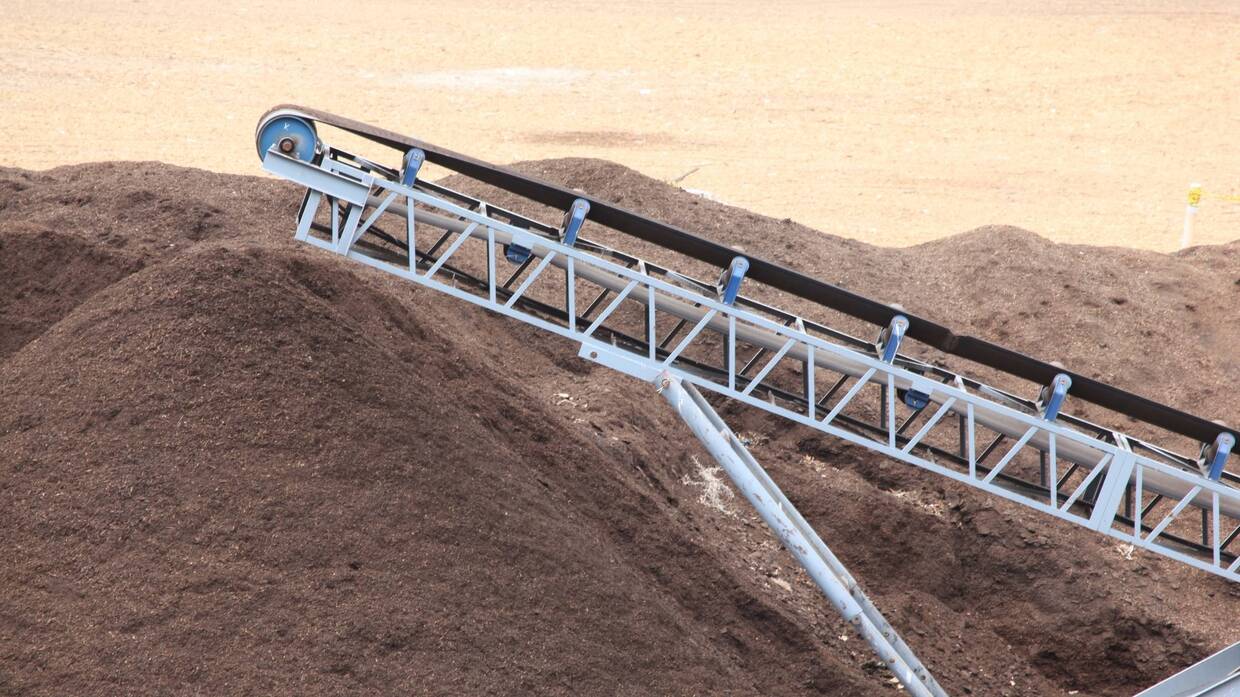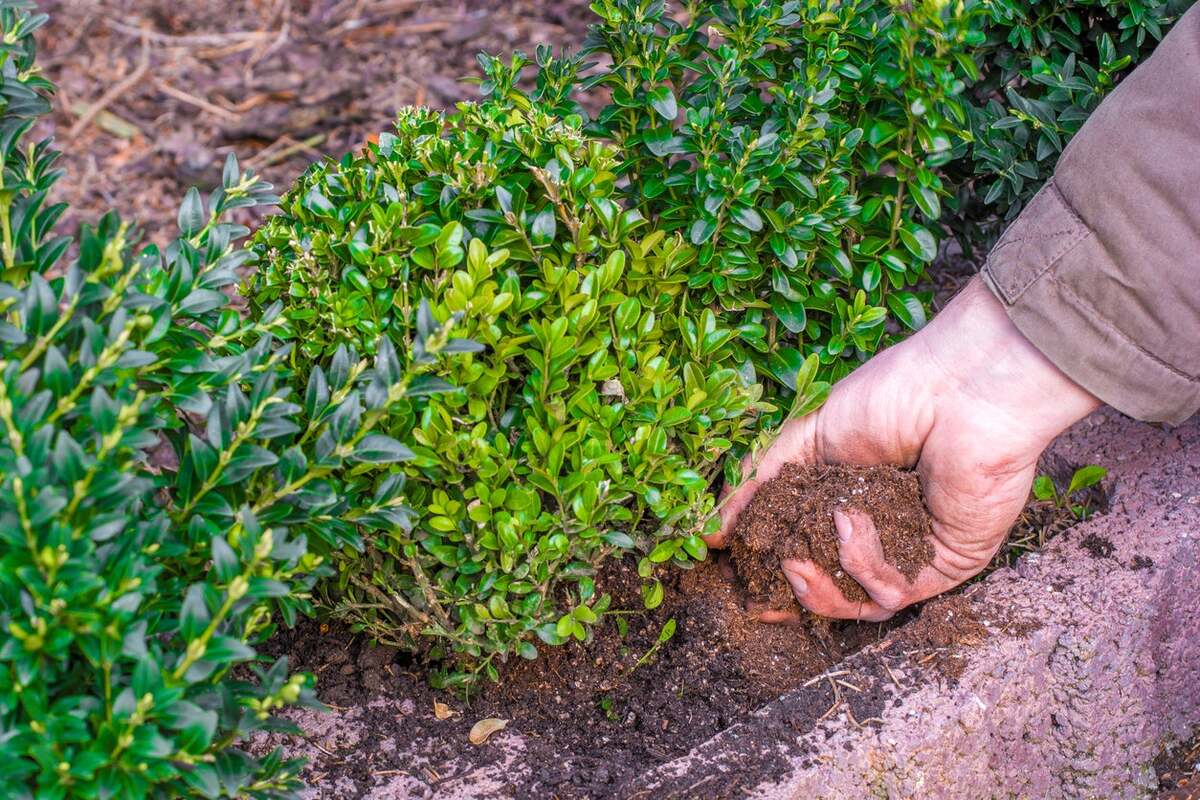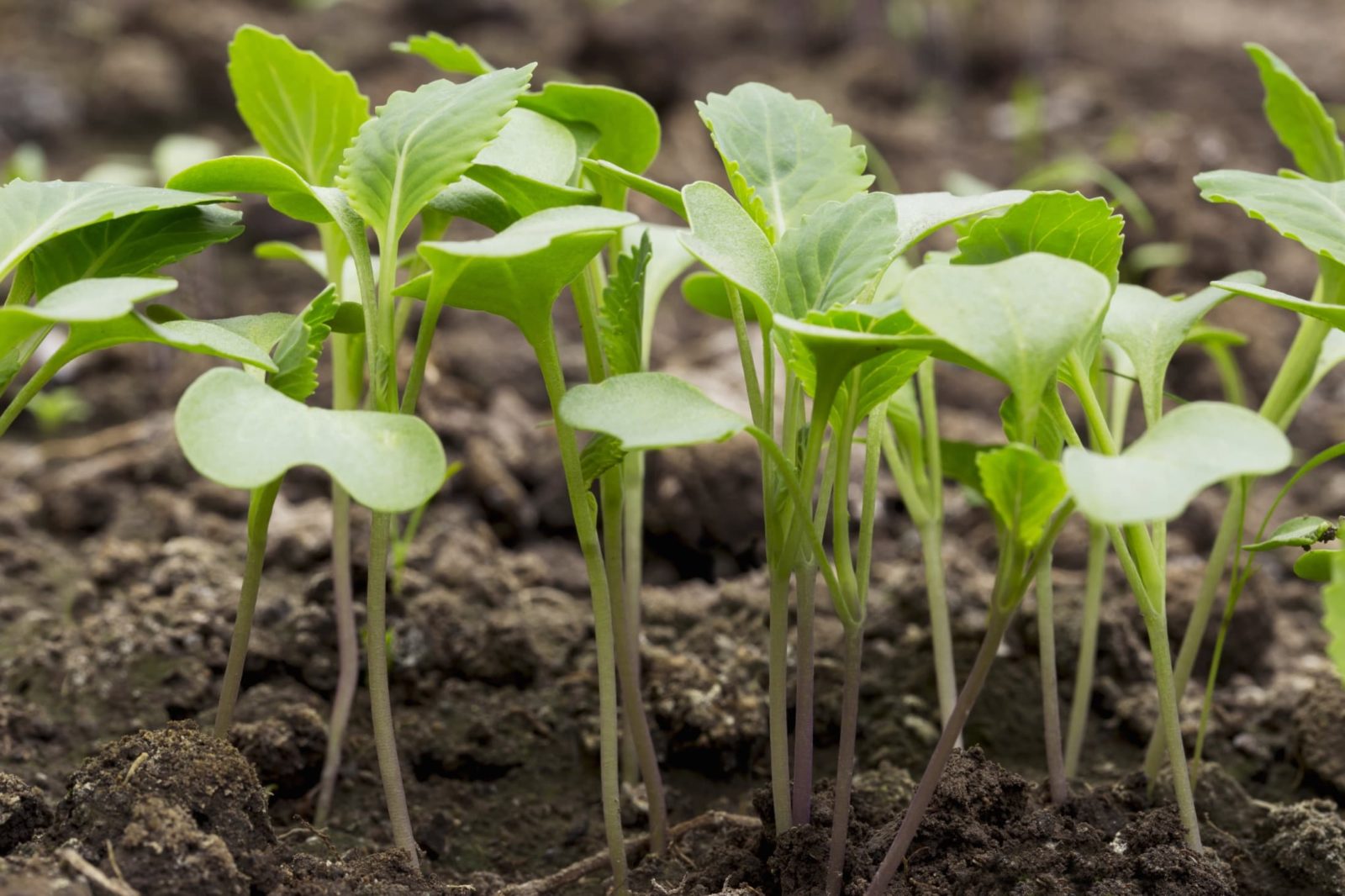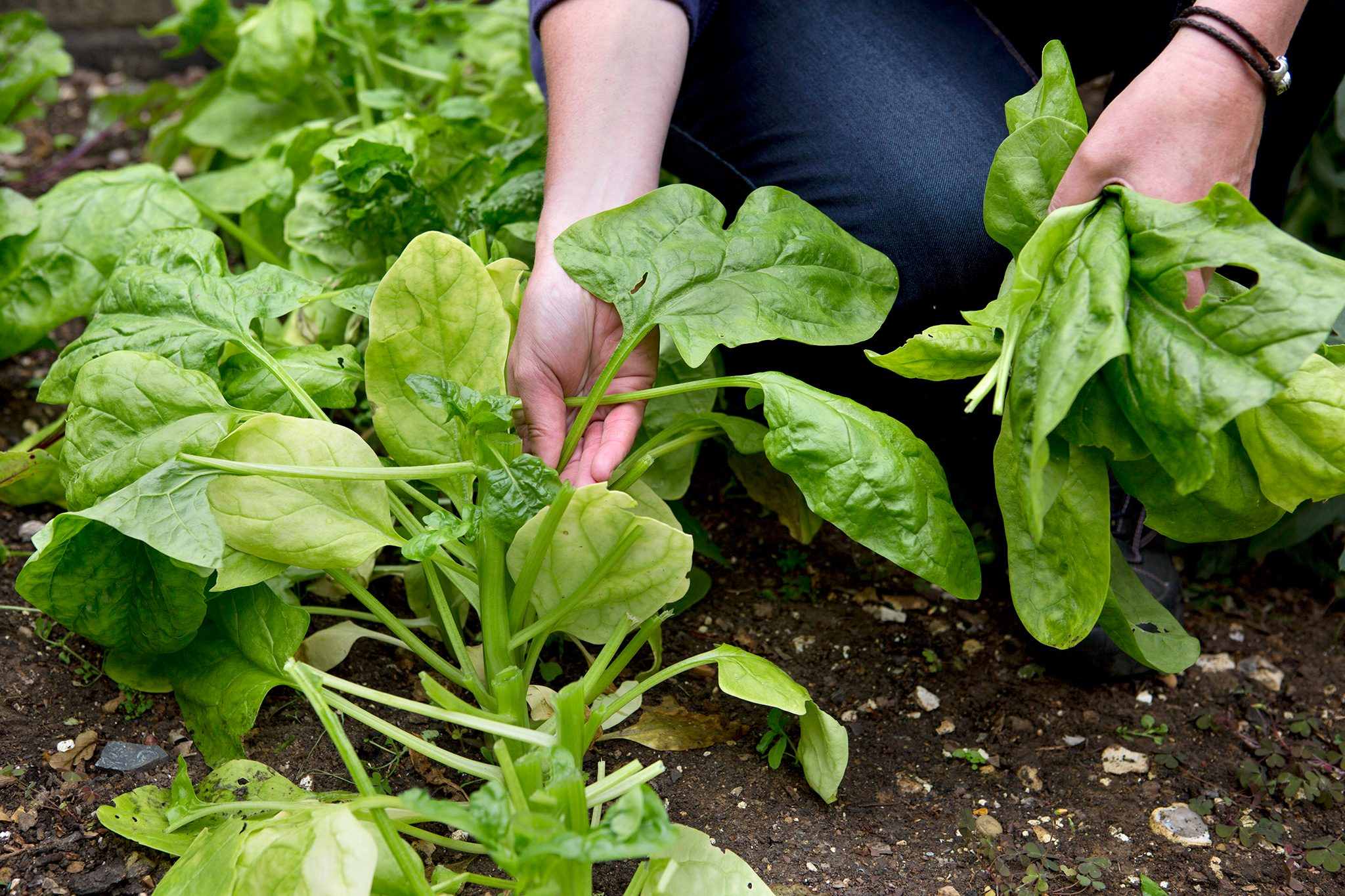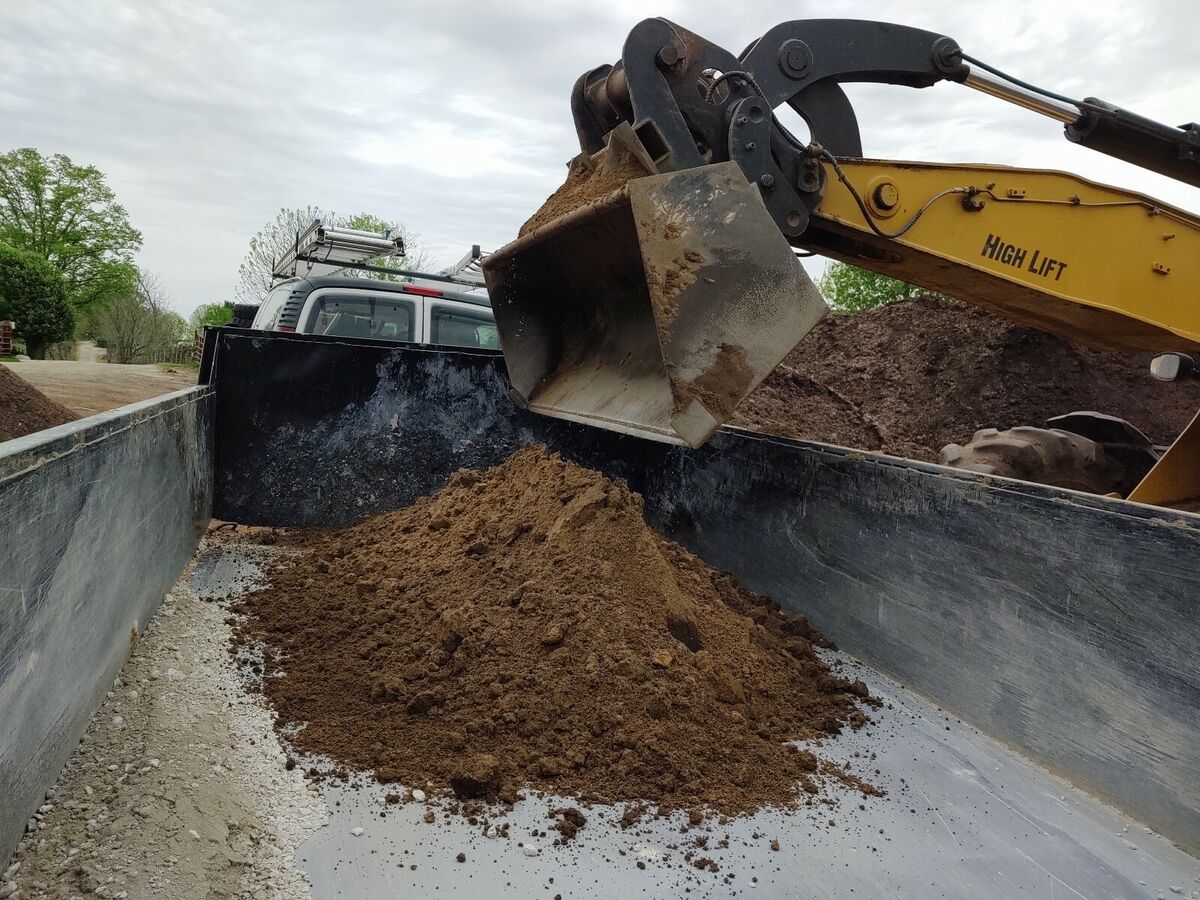Home>Gardening Basics>Understanding Soil>How Deep Is Topsoil Usually


Understanding Soil
How Deep Is Topsoil Usually
Modified: February 8, 2024
Understanding soil is crucial for gardeners. Learn about topsoil depth and its impact on plant growth and soil health.
(Many of the links in this article redirect to a specific reviewed product. Your purchase of these products through affiliate links helps to generate commission for Chicagolandgardening.com, at no extra cost. Learn more)
Table of Contents
Introduction
Welcome to the world of soil! Soil is one of the Earth’s most valuable resources, providing a foundation for plants to grow and nourishing the entire ecosystem. Within the realm of soil lies a crucial layer known as topsoil, which plays a vital role in sustaining life on our planet. But have you ever wondered how deep topsoil usually is?
Topsoil is the uppermost layer of soil, typically ranging from 2 to 8 inches in depth, although it can vary depending on various factors. This layer is rich in organic matter and essential nutrients, making it ideal for supporting plant growth. Understanding the depth of topsoil is essential for farmers, gardeners, and environmentalists alike, as it directly impacts agriculture, landscaping, and overall sustainability.
In this article, we will explore the depth of topsoil, unveil the factors that influence it, and explore the significance of maintaining adequate topsoil depth. Additionally, we will discuss strategies for managing and preserving topsoil to ensure its longevity and productivity. So, let’s dig in and uncover the secrets of topsoil depth!
Definition of Topsoil
Before delving deeper into the depth of topsoil, let’s first understand what precisely topsoil is. Topsoil is the uppermost layer of soil, commonly referred to as the “A horizon” in soil science. It is the layer that is closest to the surface and is often distinguishable by its darker color and crumbly texture. This layer is teeming with organic matter, microorganisms, and nutrients, making it a fertile ground for plant growth.
Topsoil is typically composed of a mixture of mineral particles (such as sand, silt, and clay), organic matter (such as decaying plant material and animal remains), water, air, and various microorganisms. The organic matter present in topsoil serves as a food source for microorganisms and acts as a sponge, retaining moisture and nutrients for the plants.
It is important to note that the composition of topsoil can vary depending on the region and specific geographic location. Factors such as climate, vegetation, parent material, and the processes of weathering and erosion all contribute to the unique characteristics of topsoil in a given area.
The depth of topsoil can vary from one location to another, but it typically ranges from 2 to 8 inches. This depth may seem relatively shallow, but it plays a crucial role in supporting plant growth. The uppermost layer of topsoil is often the most nutrient-rich and fertile, providing the necessary elements for roots to anchor, uptake nutrients, and access water.
Understanding the definition and characteristics of topsoil sets the stage for exploring its depth and its significance in various aspects of agriculture, gardening, and environmental sustainability.
Formation of Topsoil
The formation of topsoil is a gradual and intricate process that occurs over thousands of years. It involves the interaction of various geological, biological, and environmental factors. Understanding how topsoil is formed helps us appreciate its importance and value in sustaining life on Earth.
The process of topsoil formation begins with the weathering of rocks and minerals. Over time, the forces of wind, water, and temperature changes break down large rocks into smaller pieces. This process, known as physical weathering, creates a supply of mineral particles that contribute to the composition of topsoil.
Simultaneously, chemical weathering takes place, where chemical reactions occur between minerals and substances in the environment. These reactions result in the release of nutrients and the formation of new compounds, which eventually contribute to the fertility of the topsoil.
Organic matter plays a crucial role in the formation of topsoil. As plants and animals die, their remains decompose, forming organic matter that becomes an integral part of the soil. Microorganisms, such as bacteria and fungi, break down the organic matter, releasing nutrients and contributing to the overall fertility of the topsoil.
Another vital contributor to topsoil formation is the activity of soil organisms. Earthworms, insects, and other creatures burrow through the soil, mixing organic matter, improving soil structure, and enhancing nutrient cycling. Their continuous activity helps create a well-structured and fertile layer of topsoil.
Time is a crucial factor in the formation of topsoil. It takes thousands of years for topsoil to develop, and the continuous interplay of weathering, organic matter accumulation, and biological activity contribute to its gradual formation.
Overall, the formation of topsoil is a dynamic and complex process that involves the interaction of physical, chemical, and biological factors. This natural process creates a precious layer of soil that sustains plant life and supports the delicate balance of ecosystems.
Depth of Topsoil
The depth of topsoil varies depending on several factors, including geographic location, climate, vegetation, and human activities. The typical depth of topsoil ranges from 2 to 8 inches, although it can be deeper or shallower in certain areas.
In regions with abundant rainfall and high organic matter content, topsoil tends to be deeper. This is because the organic matter helps retain moisture and nutrients, allowing the soil to support a thicker layer of vegetation. In contrast, arid environments with limited rainfall may have shallower topsoil due to the lack of moisture and organic matter accumulation.
Another factor affecting topsoil depth is the type of vegetation present in an area. Dense forests tend to have a thicker layer of topsoil due to the continuous input of litter from fallen leaves, twigs, and branches. This organic matter gradually decomposes, enriching the soil and contributing to the depth of topsoil. Grasslands and agricultural fields, on the other hand, may have shallower topsoil due to regular plowing and cultivation practices that disturb the soil structure.
Human activities also play a significant role in the depth of topsoil. In urban areas, the construction of buildings, roads, and infrastructure can result in the removal or disturbance of topsoil, leading to its reduction in depth. Similarly, unsustainable agricultural practices such as excessive tilling, erosion, and improper soil management can deplete topsoil depth over time.
It is essential to maintain adequate topsoil depth as it directly impacts the health and productivity of plants. The depth of topsoil determines the available space for plant roots to explore, access nutrients, draw water, and establish a stable anchor in the soil. A sufficient layer of topsoil also promotes soil fertility by providing a reservoir for organic matter and beneficial soil organisms.
Moreover, topsoil depth influences the soil’s water-holding capacity and the ability to withstand drought conditions. Deeper topsoil can retain more water, making it beneficial in areas with limited rainfall or periods of dry spells.
Overall, understanding the depth of topsoil is crucial in various fields, such as agriculture, horticulture, and land management. It helps inform decisions related to crop selection, irrigation practices, and soil conservation strategies, ultimately leading to sustainable land use and preservation of our natural resources.
Factors Affecting Topsoil Depth
Several factors influence the depth of topsoil, contributing to variations in its thickness across different regions and landscapes. Understanding these factors is essential for managing and preserving topsoil depth effectively.
1. Climate: Climate plays a significant role in determining topsoil depth. Regions with higher rainfall typically have deeper topsoil due to increased organic matter accumulation and nutrient leaching. In contrast, arid regions may have shallower topsoil due to limited moisture and organic matter content.
2. Vegetation: The type and density of vegetation in an area impact topsoil depth. Forested areas tend to have deeper topsoil due to the continuous influx of organic matter from fallen leaves, branches, and other plant debris. In contrast, grasslands and agricultural fields can have shallower topsoil due to regular plowing and disturbance of the soil structure.
3. Parent Material: The type of rock or sediment from which the soil has formed, known as the parent material, influences topsoil depth. Different parent materials have varying levels of weathering and fertility, which can impact the depth and composition of the topsoil in a specific area.
4. Erosion: The process of erosion can significantly affect topsoil depth. Water and wind erosion can remove the topsoil layer, leading to a reduction in its thickness. Factors such as slope gradient, land management practices, and vegetation cover impact the rate of erosion and, consequently, the depth of topsoil.
5. Human Activities: Human activities have a profound impact on topsoil depth. Activities such as land conversion, deforestation, construction, and improper land management practices can lead to the loss or depletion of topsoil. Unsustainable agricultural practices, including over-tilling, excessive use of fertilizers, and inadequate soil conservation measures, can also reduce topsoil depth over time.
6. Soil Compaction: Soil compaction can reduce topsoil depth by compacting the soil particles, limiting root penetration and water infiltration. Heavy machinery, livestock grazing, and foot traffic are common causes of soil compaction, which can negatively impact soil structure and depth.
It is important to consider these factors when managing and preserving topsoil depth. Implementing sustainable land management practices, such as conservation agriculture, erosion control measures, and proper soil conservation techniques, can help maintain and enhance topsoil depth for long-term soil health and productivity.
Importance of Topsoil Depth
The depth of topsoil plays a critical role in supporting plant growth, maintaining soil fertility, and promoting the overall health of ecosystems. Understanding the importance of topsoil depth can help inform land management practices and ensure the sustainable use of this valuable resource.
1. Nutrient Availability: The depth of topsoil directly affects the availability of essential nutrients for plant uptake. Deeper topsoil provides a greater reservoir of nutrients, allowing plants to access a wider range of minerals necessary for growth and development. This promotes healthier plants, higher crop yields, and overall ecosystem productivity.
2. Water-Holding Capacity: Topsoil acts as a sponge, enabling it to retain moisture for plants. Deeper topsoil has a larger water-holding capacity, helping to mitigate the effects of drought and providing a steady supply of water to plant roots during dry spells. This is especially crucial in arid regions where water availability is limited.
3. Root Development: Ample topsoil depth allows for extensive root development. Longer roots can reach deeper into the soil, accessing nutrients, moisture, and anchoring plants securely. Well-developed root systems contribute to stronger and more resilient plants, withstand adverse weather conditions, and prevent soil erosion.
4. Organic Matter Accumulation: Deeper topsoil provides more space for organic matter accumulation. Organic matter enriches the soil by improving its structure, nutrient-holding capacity, and water infiltration. It also serves as a source of energy for soil microorganisms, contributing to a healthy soil ecosystem and promoting nutrient cycling.
5. Erosion Prevention: Topsoil depth plays a crucial role in preventing soil erosion. A thicker layer of topsoil acts as a protective barrier, preventing the loss of valuable soil through water and wind erosion. Maintaining topsoil depth through proper land management practices reduces the risk of erosion and preserves soil fertility.
6. Biodiversity Support: Adequate topsoil depth supports diverse plant and animal life. Plants depend on topsoil depth for root development and nutrient accessibility, providing habitat and food sources for a wide range of organisms. Maintaining topsoil depth helps sustain biodiversity and maintains the balance of ecosystems.
In summary, the depth of topsoil is critical for supporting plant growth, nutrient availability, water retention, erosion prevention, and overall soil health. Recognizing the importance of topsoil depth can guide land management decisions, promoting sustainable agriculture, protecting natural habitats, and ensuring long-term environmental sustainability.
Managing Topsoil Depth
Preserving and managing topsoil depth is crucial for maintaining soil fertility, supporting sustainable agriculture, and ensuring the long-term productivity of our lands. Here are some strategies to effectively manage topsoil depth:
1. Conservation Tillage: Adopting conservation tillage practices can help preserve topsoil depth. Reduced or no-till systems minimize soil disturbance, maintaining the natural soil structure and preventing erosion. This allows for better moisture retention, nutrient cycling, and organic matter accumulation, enhancing topsoil depth over time.
2. Cover Crops: Planting cover crops during fallow periods or between cash crops can protect the soil surface from erosion and help build topsoil. Cover crops reduce runoff, add organic matter, and enhance soil structure, contributing to topsoil depth and overall soil health.
3. Crop Rotation: Implementing crop rotation practices diversifies the root structure, nutrient uptake, and organic matter input into the soil. Different crops have different nutrient requirements, and rotating crops can help prevent nutrient depletion in specific areas of the topsoil, promoting overall soil fertility and depth.
4. Organic Matter Management: Adding organic matter, such as compost or well-rotted manure, to the soil improves its fertility and enhances topsoil depth. Organic matter acts as a source of nutrients, increases water-holding capacity, and promotes the activity of beneficial soil microorganisms, contributing to a healthy topsoil layer.
5. Soil Erosion Control: Implementing erosion control measures, such as contour plowing, terracing, and using windbreaks or vegetative buffers, helps minimize soil erosion and maintain topsoil depth. By preventing the loss of topsoil through erosion, these practices protect the valuable resource and preserve its productivity.
6. Proper Irrigation and Moisture Management: Efficient irrigation and moisture management practices help reduce water loss and maximize water use by plants. This helps maintain a consistent soil moisture level, promoting root development and preventing drought stress. Adequate soil moisture supports topsoil depth by providing an ideal environment for nutrient availability and plant growth.
7. Soil Testing and Nutrient Management: Regular soil testing enables farmers and gardeners to monitor nutrient levels in the soil and make informed decisions regarding nutrient management. By applying the right amount and type of fertilizers based on soil test results, nutrient imbalances can be avoided, promoting topsoil health and depth.
By implementing these management strategies, we can effectively preserve and enhance topsoil depth, ensuring the long-term sustainability and productivity of our land. It is crucial to recognize the importance of maintaining this valuable resource and take proactive steps to protect and nurture it for future generations.
Conclusion
Topsoil depth is a crucial component of our soil ecosystem, playing a vital role in supporting plant growth, maintaining soil fertility, and sustaining diverse ecosystems. The depth of topsoil can vary based on factors such as climate, vegetation, erosion, and human activities. Understanding and managing topsoil depth is essential for preserving this valuable resource and ensuring the sustainability of our land.
From the formation of topsoil through natural weathering processes to the impact of human activities on topsoil depletion, each aspect contributes to the overall health and productivity of the soil. Adequate topsoil depth ensures that plants have access to the necessary nutrients, water, and anchorage they need to thrive.
Protecting and managing topsoil depth requires implementing sustainable practices such as conservation tillage, cover cropping, crop rotation, organic matter management, erosion control, and proper irrigation. These practices help maintain soil structure, enhance nutrient availability, and prevent erosion, ultimately preserving topsoil depth and the integrity of our lands.
By recognizing the importance of topsoil depth and adopting responsible land management practices, we can support sustainable agriculture, maintain biodiversity, and protect our natural resources for future generations. Building and preserving healthy topsoil is essential for a resilient and sustainable food system, as well as for the overall health and well-being of our planet.
So, let’s embrace the significance of topsoil depth and strive to be custodians of our soil. By caring for and managing this valuable resource, we can create a healthier, more sustainable, and prosperous future for ourselves and the generations to come.
